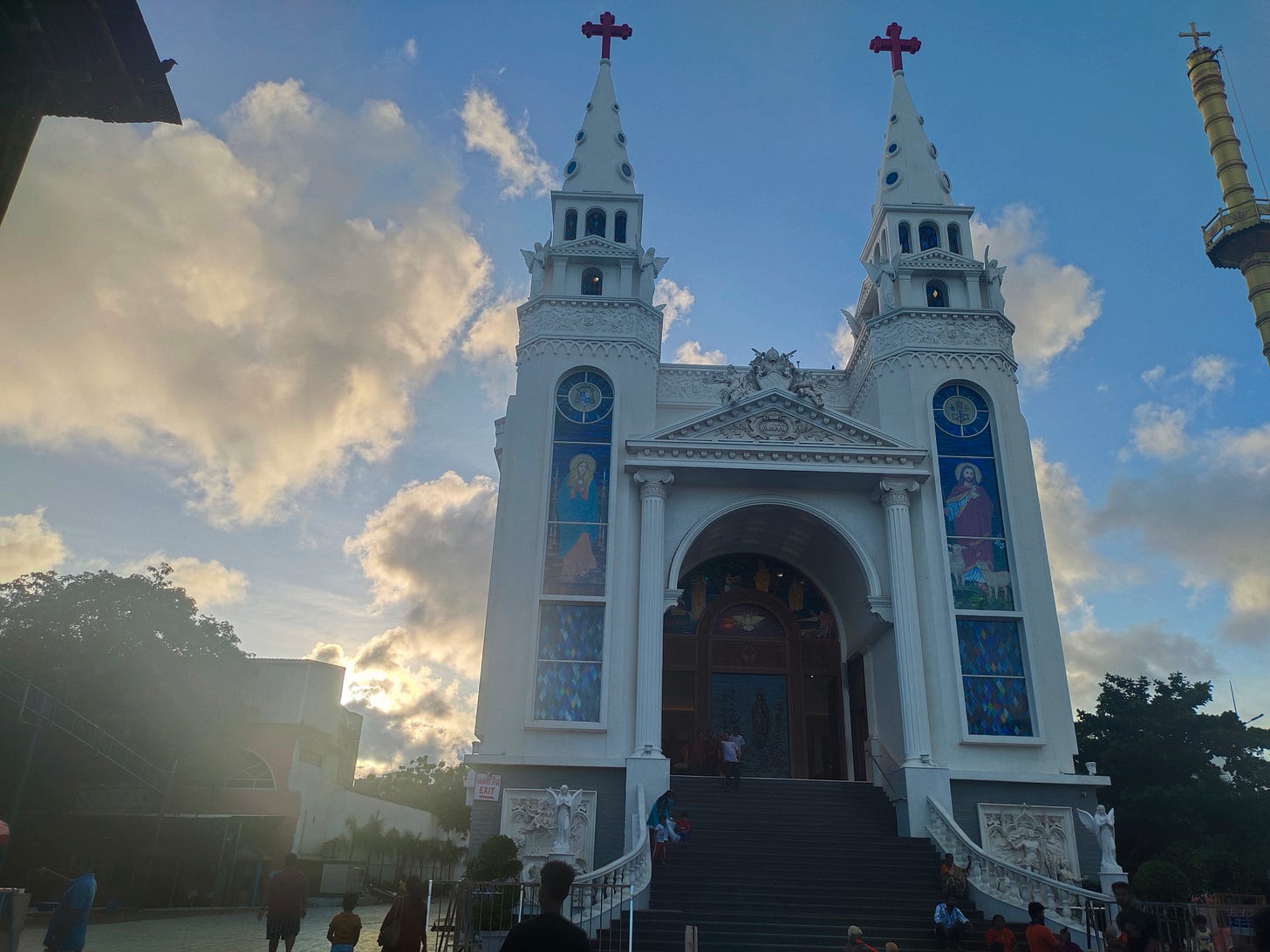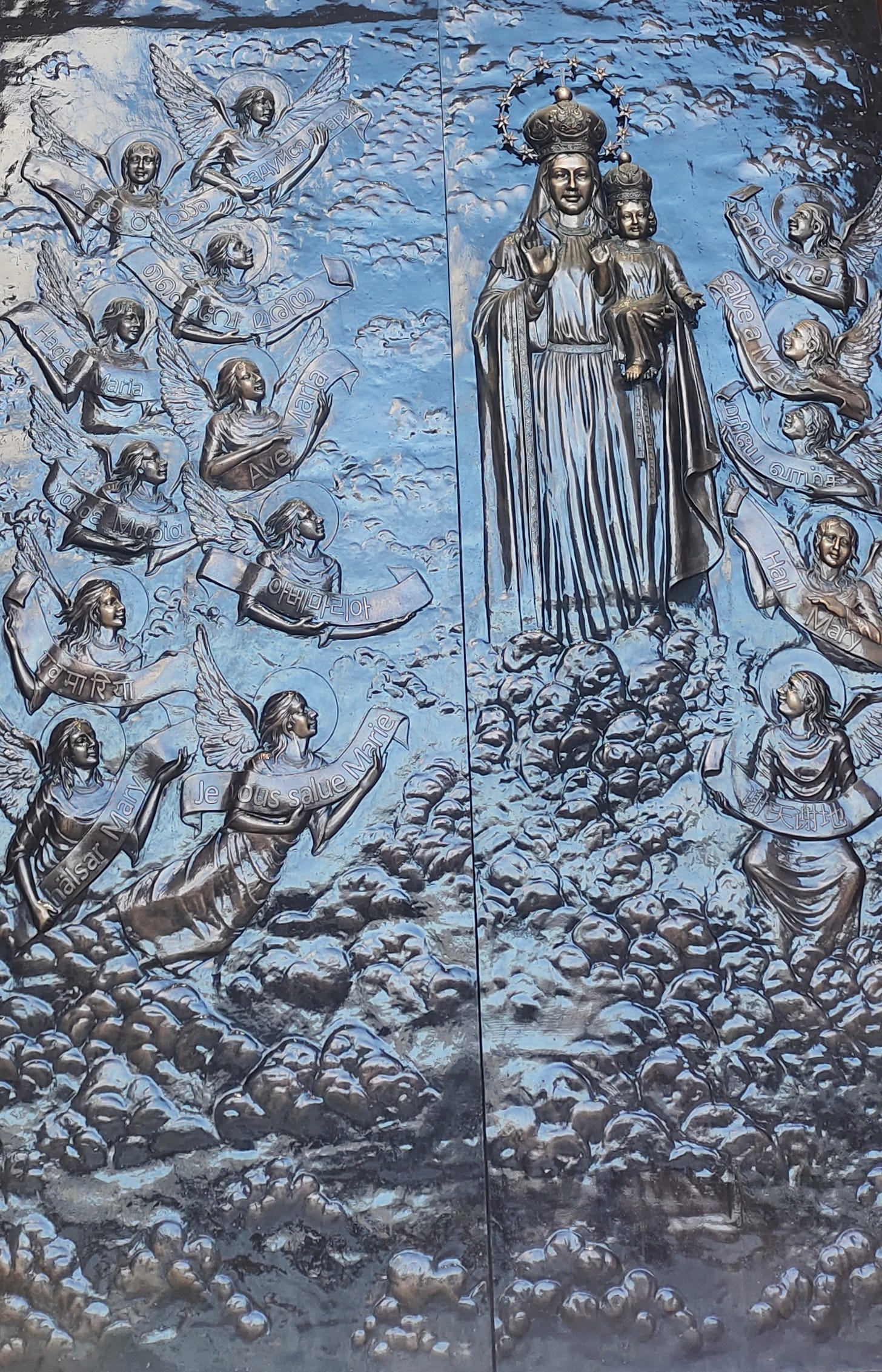Two foreigners called out to me and A just as we exited Annai Velankanni Shrine. They introduced themselves after confirming if we spoke English.
“Why do they.” the man from Germany pointed to the children who had applied sandalwood paste on their shaven heads. The lady accompanying him, hailing from Canada, asked the question more clearly: “Is that some kind of ritual practised by the Church?”.
While A said ‘Yes’, I shook my head. The foreigners looked at us curiously.
I added that this practice existed in Hinduism. The foreigners smiled at each other. The German man then said,” Tradition overlaps everywhere.”
And he was right. Devotion varies, while religion converges.
The road on the left of Bessy beach opens up to a junction before opening pathways to a narrow residential area. The Annai Velankanni Shrine, a landmark of the posh Besant Nagar area, stood serenely in this space, its white marble texture making it visible amidst the changing hues of the sky.
The watchman sat unbothered in his steel chair near the steps leading to the doors of the massive church. He had been telling people that the church only opens at 4 pm, and not a minute before that. Despite the scorching midday heat, he patiently repeated it to 10 more tourists who had approached him impatiently.
The moment the clock struck 4, the doors opened. Tourists and locals who had been biding time on the beach, Murugan idli shop, and Mother Mary’s square swarmed in as if they had been waiting for the doors to open.
The wooden doors to the majestic building were engraved with angels praying to The Goddess mother who held infant Jesus. Catholic paintings covered a part of the chapel’s interior. And where there were no paintings, white paint spread over it. Three rows of pews stood lined one after another. Despite the ‘No photos board’, many walked inside and started to click pictures of the place. The golden extravagance of the long chapel ended with the statue of Jesus. I realised that the inscriptions and extravagance were indeed a part of most sacred places despite the different religious perpetuations.
Walking down the steps, one spots Mother Mary’s square, a chapel dedicated to Virgin Mary located on the opposite side. It presents the four apparitions of the Goddess as believed by the Catholics. Two engraved elephants on either side of its entrance reminded me of Hindu temples where giant elephants, carved out of stone, rest on either side of a particular shrine.
The marine shrine also honoured Fr PT Arulappa, the then Parish priest and a prominent missionary who started ‘Our Lady of Velankanni Church’ under trying conditions. The church had been his dream, and its reinstatement- his dream come true.
Honouring the priests and devotees, I realised, was another universal thing holding true to most sacred sites.
Late Rev. Fr. P.T.Arulappa had initiated this construction to honour Mother Mary, who had appeared in his dreams carrying an infant Jesus. The original building, built in 1972, was expanded later to include the museum, adoration chapel and Mother Mary’s square. However, the foundation can be the apparitions of the Goddess around the 16th and 17th centuries.
The Grotto, constructed in 2002, depicts three apparitions of the Goddess at the sacred pilgrimage Vailankanni. According to the local tradition, the church accepts the sarees offered to the Blessed Mother. It was a tradition I am acquainted with via local temples.
The foreigner’s words made sense. It meant to bind the broken races than to argue about it. Well, people find their customs and traditions mirrored in many unexpected corners of the world. And they don’t even think about it unless they’re made to look. Religion is just one thread, while the other stronger ones go unnoticed. Traditions do overlap despite labelled differences, but that just makes them more beautiful.





